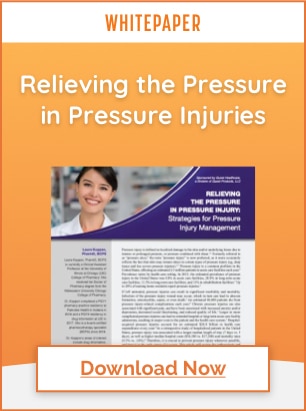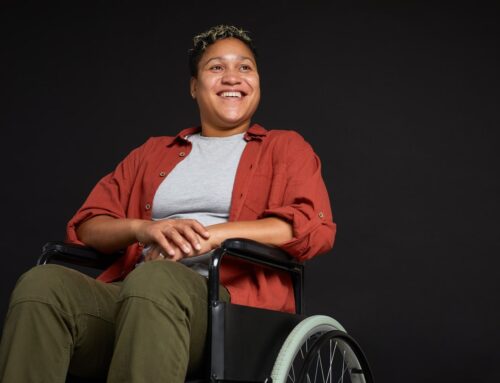
Bowel Management: Hospital to Home
It’s the moment many spinal cord injury (SCI) patients are excited about – the transition back to home. As exciting as this is, it can also be a time full of questions and trepidation when it comes to managing their bowel care.
There are many considerations to prepare for, including who will be assisting with the bowel program, what equipment will be needed, and any other home modifications to consider to make their transition home as smooth and comfortable as possible.
Complications and Evacuation Problems – Neurogenic Bowel
A bowel program for a patient with neurogenic bowel should be designed to take into account attendant care, personal goals, life schedules, role obligations of the individual, and self-rated quality of life. Bowel programs should be initiated during acute care and continued throughout life, unless full recovery of bowel function returns.
Careful measures must be taken to avoid pressure ulcers and falls. Adequate social and emotional support should be available to help individuals manage actual or potential disabilities and handicaps associated with neurogenic bowel. All aspects of a bowel management program should be designed to be easily replicated in the individual’s home and community setting.
Effective treatment of common neurogenic bowel complications, including fecal impaction, constipation, and hemorrhoids are necessary to minimize potential long-term morbidities.
Enemeez® mini-enema products have shown to be effective for bowel care needs associated with spinal cord injury, or disease and general constipation. Enemeez® products are designed for ease of use for patients and caregivers, with a gentle, non-irritating formula that provides fast, predictable results typically within 15 minutes.
A bowel management program should be implemented for any patient who experiences (or is at risk of experiencing) bowel incontinence or retention/constipation. The bowel program of choice will be individualized for each patient, requiring the least amount of intervention (i.e. high fiber diet and dietary supplements, medications, mini-enemas, digital stimulation, etc.) to achieve acceptable results as identified by the patient, the treating clinicians, and/or the rehabilitation team.
Before Transitioning Home – Some Things to Consider
Waste Disposal Requirements: If an elevated toilet seat or commode isn’t used, it’s important for the patient or caregiver to understand their city regulations regarding waste disposal. Stool is considered a biohazardous waste, and every city/town has unique requirements so its important to research this and make any needed preparations.
Autonomic Dysreflexia: Even if autonomic dysreflexia is not present when leaving the hospital, it’s important to be prepared for it. Help educate the patient on what it is, how to prepare for it, and what to do.
Food Tolerance: Post SCI, food tolerance changes so it’s important the patient understands which foods upset their regularity and which diet works best for them.
Transfer to Commode: Some patients need attendant care for transfers to a commode due to spasms. If assistance transferring to a commode is needed, it’s important to make proper preparations.
Emergency Contact Information: Ensure that the patient knows all relevant medical emergency contact information – for all hours of the day and type of emergency – before they leave the hospital.
Establish the Timing of Bowel Care
Bowel movements are most common after a meal – especially in the first 15 minutes after breakfast, but everyone is different. It’s important to set up a home schedule that most accurately reflects the patient’s unique needs.
Consistency is key, and timing/frequency needs to be established with consideration to the type of neurogenic bowel and the patient.
Upper Motor Neuron (UMN): is best managed on a daily, or every other day routine because this effectively utilizes the defecation reflex. Nobody should go for more than three days without a bowel movement.
Lower Motor Neuron (LMN): may require a daily bowel care routine as the defecation reflex is not able to aid in a complete bowel evacuation and can only empty at the time of bowel care. LMN injury involves a flaccid bowel and the sphincter does not control when an evacuation occurs.
Enemeez® and Enemeez® Plus
The Enemeez® formulation functions as a stool-softening, hyperosmotic laxative by drawing water into the bowel from surrounding body tissues. The docusate sodium in this mini enema product acts as a softener by preparing the stool to readily mix with watery fluids. The increased mass of stool promotes bowel evacuation by stimulating nerve endings in the bowel lining and initiating peristalsis. Not only does it soften and loosen the stool, but it initiates a normal, replicated bowel movement within 2-15 minutes.
Enemeez® Plus contains 20mg of benzocaine, assisting in the anesthetization of the rectum and lower bowel. This formulation was developed for patients who experience autonomic dysreflexia, hemorrhoids, fissures, or painful bowel movements.
Bowel Care Record
A Bowel Care Record helps the patient decide whether their bowel program is working. Every time bowel care is performed, the patient or caregiver should write down the results. When making a change to a bowel care program. Only one aspect of the bowel care program should be changed at a time, and any change should be maintained for at least two weeks.
The following chart example can help the patient and/or caregiver evaluate the change and identify the most appropriate bowel care regimen to maximize quality of life and minimize the time spent on bowel care:

Dietary Chart
In addition to a bowel care chart, the patient and/or caregiver should write down everything the patients eats and drinks to determine how diet affects bowel movement. For 30 days, record food description and quantity for each meal. The following is a sample dietary chart:

Please see the attached for more information about the daily record chart and diet tips!
Disclaimer: The material contained is for reference purposes only. Alliance Labs, LLC and Summit Pharmaceuticals do not assume responsibility for patient care. Consult a physician prior to use. Copyright 2020 Summit Pharmaceuticals and Alliance Labs LLC.




![[Live Webinar] Neurogenic Bowel Dysfunction in Multiple Sclerosis](https://www.questhealthcare.net/wp-content/uploads/2025/02/325-Quest-Healthcare-Speaker-Session-1-500x383.png)


